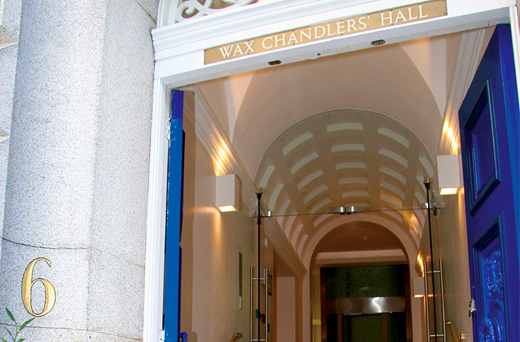The Company has a number of members working in the modern wax industry:
The Company is also an affiliate member of the European Wax Federation.
Types of wax
Throughout most of recorded history in Europe, wax has meant beeswax. During the past 150 years a number of other substances have become known as waxes – a loosely defined term referring to substances with similar properties to beeswax, namely:
- plastic (malleable) at normal ambient temperatures
- a melting point above approximately 45 °C (113 °F)
(which differentiates waxes from fats and oils) - a relatively low viscosity when melted (unlike many plastics)
- insoluble in water
- hydrophobic
Today waxes may be natural secretions of plants or animals, artificially produced by purification from natural petroleum or completely synthetic. Thus waxes can be further categorised as natural, synthetic, mineral hydrocarbon and petroleum. The diagram (table of waxes) shows the classification of waxes according to their origin or how they were obtained.
Uses of wax
Today there are at least 500 different applications of wax. Candle making accounts for almost half of wax used but it can be found in a myriad of items that are regularly used by people and industry, such as:
- to impregnate and coat paper and card, to waterproof it or make it resistant to staining, or to modify its surface properties
- wax polishes for furniture and other wood products
- footwear and vehicles
- as mould release agents in mould making
- a coating for food stuffs, e.g. Edam and Gouda cheeses
- to waterproof leather and fabric
- a removable model in lost-wax casting of gold, silver and other materials, used since antiquity
- wax candles were also used in secular life for lighting, signals in warfare, safety in travel and for time keeping, and are still in popular use today to provide soft lighting for meals and other social activities
- wax with coloured pigments added has been used as a medium in encaustic painting, and is used today in the manufacture of crayons and coloured pencils
- lipstick and mascara are blends of various fats and waxes coloured with pigments, and both beeswax and lanolin are used in other cosmetics
- the sports of surfing, skiing, snowboarding and skateboarding often use wax to enhance the performance
- duck wax used for de-feathering poultry.




